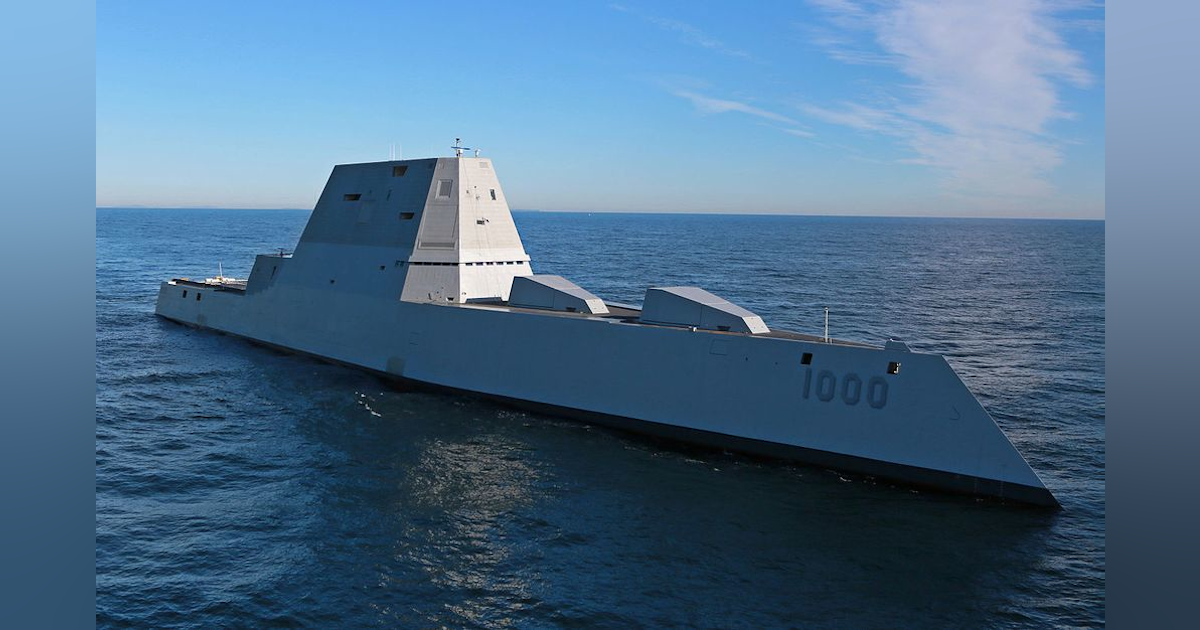Maritime warfare is quickly occupying the center stage in the great power game. Amid this, the US has revealed its plans to convert the Zumwalt-class destroyers into highly advanced missile launch platforms by 2025.
As Russia Takes Its Latest Fighter Jet To Dubai, Will Su-75 ‘Checkmate’ American F-35 Aircraft For UAE Deal?
Taliban Air Force: As The US Leaves Military Hardware Behind In Afghanistan, Is Taliban Ready To Build Its Own Air Force?
It’s worth mentioning that the Zumwalt program has its share of controversy. From its exorbitant price tag — each ship costs $4 billion — to unstable hull to software and operational issues, the Zumwalt-class ships have given the US Navy enough reasons for regret, defense analyst Parth Satam earlier wrote for The EurAsian Times.
The Intermediate-Range Conventional Prompt Strike (IRCPS) hypersonic weapons planned for these destroyers are set to replace the 155mm Advanced Gun Systems that stealthy ships are currently equipped with.

Every Zumwalt-class destroyer comes fitted with two stealthy triangular 155mm Advanced Gun System (AGS) that are placed in the forward hull. In storage, the AGS’s gun barrel is kept inside the angled turret.
The turret’s doors are kept closed to increase the stealth profile, according to Naval News. The mechanism for firing shells is a little complex: doors of the turret open and the gun barrel goes up outward as the turret rotates.
The original intention behind designing the AGSs was to provide Long-Range Precision Fires (LRPF) shore bombardment with a range of about 60 to 100 kilometers. This would act as support in case of amphibious assault by the US Marines.
Rafale Jet ‘Scam’: Why New Rafale Allegations Are Simply Preposterous Kept Alive By ‘Left Lineage’ French Media
However, this plan ran into trouble when it was decided that of the 30 Zumwalt class destroyers that were originally planned, only 3 would materialize. This impacted the budget for producing the AGS’s unique ammunition.
The cost-per-round skyrocketed to an extent where the extended-range GPS-guided shells would be valued anywhere between $800,000 and $1 million apiece.
The exorbitant rate ensured that these AGSs could never fire a shot. All the 155mm systems onboard the Zumwalt destroyers were given an “inactive status” by the Naval Sea Systems Command (NAVSEA).
In April this year, the USN’s top admiral announced that the service plans to employ the CPS hypersonic missile aboard its trio of Zumwalt-class destroyers – the USS Zumwalt (DDG 1000), USS Michael Monsoor (DDG 1001), and USS Lyndon B. Johnson (DDG 1002) by 2025.
To put hypersonic weapons on the Zumwalt class, huge launch tubes need to be installed.
What’s The Plan?
The Navy’s 2022 budget that was revealed in May-end uncovers new details about those launchers. First, the Zumwalt’s two AGS mounts will have to be removed to fit new launchers. In its place, an ‘Advanced Payload Module’ that will have the ability to carry and launch up to 12 CPS munitions will be installed.
It seems that this development has been fast-tracked. The previous plans aimed at deploying hypersonic weapons were set for 2028 and targeted towards the Virginia-class attack submarines. This was revealed in a 2021 Congressional Research Service report called ‘Hypersonic Weapons: Background and Issues for Congress”.
The current plan involving the Zumwalt destroyers also seems to be more long-term than the project to give the navy’s aging Ohio-class submarines hypersonic weapons in 2025. These submarines will be given these swift weapons only as an interim capability as they are soon to be retired. Hypersonic weapons are clearly an ability-enhancer, even on aging underwater crafts.
The Hypersonic Advantage
The CPS hypersonic missile is a boost-glide weapon. These types of weapons are designed to send a common glide body (payload) up along the periphery of the planet’s atmosphere to a desired speed and altitude. The missile uses its descent speed to hit and destroy a target.
Alongside having a very short travel time owing to their Mach 5+ speed, hypersonic missiles are also lethal due to their high maneuverability.
The latter allows the missile to take a more unpredictable course of flight than typical ballistic missiles. Intercepting, responding to or even detecting a submarine-launched hypersonic missile would be a Herculean task.
The limited reaction time that these weapons leave the enemy with negatively impacts their ability to seek cover or relocate critical assets. This implies that hypersonic weapons serve as an ideal choice for penetrating through even the thickest, most advanced air and missile defenses. They can strike high-value as well as prospective time-sensitive targets.
This is part of the reason that a global hypersonics arms race is building up in the international arena right now. However, as The EurAsian Times had previously reported, the US is lagging behind both Russia and China in this regard.
What could also be worrisome for Washington is the fact that Beijing seems to have a quantitatively (and perhaps qualitatively) better fleet. How quickly the US can modernize its Navy and integrate hypersonic weapons remains to be seen.
- Written by Shreya Mundhra/EurAsian Times Desk
- Contact the author at: shreyya.mundhra@gmail.com
- Follow EurAsian Times on Google News